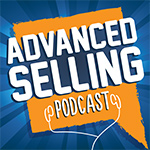
I’m sure we’ve all heard that saying, but it’s important because it applies to many aspects of life – interviews, dating, networking and presentations.
A few weeks ago, I reached out to a company via email to determine if their services fit our needs. The owner contacted me a few days later and we discussed the purpose of my email. I clearly explained what we were looking for and we then set a time to meet.
 STRIKE ONE!
STRIKE ONE!
Upon arrival, the entire staff greeted me, that’s all fine and dandy, but I was blind-sided because I didn’t expect them to join us for the meeting.
So how did that make me – the prospect – feel in this situation? Confused. If your prospect is confused within 5 minutes of meeting you, then you’ve struck out.
 √ THE LESSON: HAVE A CLEAR AGENDA AND MENTION ALL THE KEY PLAYERS PRIOR TO A MEETING WITH A PROSPECT OR CLIENT.
√ THE LESSON: HAVE A CLEAR AGENDA AND MENTION ALL THE KEY PLAYERS PRIOR TO A MEETING WITH A PROSPECT OR CLIENT.
Before you meet with a prospect and even a client, send them a CLEAR outline. The idea is to share the content of the meeting and inform them of other people who might join the meeting.
In our eBook, Email It – A Seller’s Guide to Emails That Work, we lay out the framework of how it might sound. One of the pre-written emails, specifically Email The Agenda Upfront, we lay how to write this email.
Here’s a checklist of things you should put in the upfront agenda:
- What you’d like to discuss in broad terms
- Ask them if there is anything else they’d like to discuss
- Introduce other people who might join the meeting
- Anything they should bring (if this applies)
**This gets back to the premise that a person with a plan will be in control of the process and will create a great impression! After all, I’m sure you don’t want to confuse or surprise your prospect.
 STRIKE TWO!
STRIKE TWO!
At the beginning of the meeting, each employee stared at me like a deer in headlights. Clearly none of them knew what we were meeting about.
√ LESSON: EMAIL THE AGENDA TO ALL PEOPLE ATTENDING THE MEETING.
Use common sense. If you’re bringing a colleague, your boss, a friend or whomever into a meeting with a prospect or client– always fill them in on ALL the details beforehand!
 STRIKE THREE!
STRIKE THREE!
Don’t suggest the FULL enchilada unless you know all your prospect’s problems.
 The company recommended the entire enchilada—after blindly diagnosing my pains and problems. Little did they know, the tasty taco would have fixed my problems.
The company recommended the entire enchilada—after blindly diagnosing my pains and problems. Little did they know, the tasty taco would have fixed my problems.
√ LESSON: ASK THE RIGHT QUESTIONS BEFORE YOU OFFER SOLUTION.
One IMPORTANT part of the sales process is to find the Compelling Reason for change. As sales professionals, we have to get to the bottom of why a prospect would change what they are doing now to a new solution.
Here are some optimum questions we recommend you ask to find pain:
- “What do you see as the biggest issue keeping you from your vision?”
- “Why is that a problem?”
- “What have you done in the past to fix it?”
- “What happens if you decide not to take action?”
- “How much does it cost you to have these problems?”
Babe Ruth said, “Don’t let the fear of striking out hold you back.” But if you only have three chances to hit a home run, then why not put your best foot forward and make a great impression?
 Welcome to Mailbag Monday… Thursday edition. Todays’s question is too good to wait until Monday. It’s a big one: Was anyone really, truly born to be a salesperson? Veteran sales trainers Bill Caskey and Bryan Neale explore how to implement ASP training with the non-sales people on your team.
Welcome to Mailbag Monday… Thursday edition. Todays’s question is too good to wait until Monday. It’s a big one: Was anyone really, truly born to be a salesperson? Veteran sales trainers Bill Caskey and Bryan Neale explore how to implement ASP training with the non-sales people on your team.


 √ THE LESSON: HAVE A CLEAR AGENDA AND MENTION ALL THE KEY PLAYERS PRIOR TO A MEETING WITH A PROSPECT OR CLIENT.
√ THE LESSON: HAVE A CLEAR AGENDA AND MENTION ALL THE KEY PLAYERS PRIOR TO A MEETING WITH A PROSPECT OR CLIENT. The company recommended the entire enchilada—after blindly diagnosing my pains and problems. Little did they know, the tasty taco would have fixed my problems.
The company recommended the entire enchilada—after blindly diagnosing my pains and problems. Little did they know, the tasty taco would have fixed my problems.